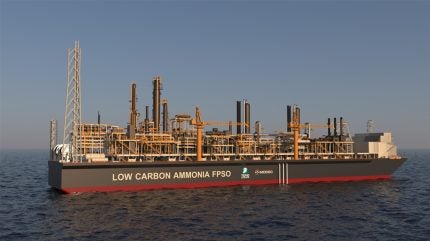
MODEC and Toyo Engineering (TOYO) have received approval in principle (AiP) from the American Bureau of Shipping (ABS) for a Blue Ammonia Floating Production Storage and Offloading (FPSO) unit.
Based on class and statutory needs, ABS completed design reviews for the FPSO.
Blue ammonia is a low-carbon ammonia produced by combining nitrogen with hydrogen, which is sourced as a byproduct of captured and stored carbon dioxide.
The Blue Ammonia FPSO is designed to produce ammonia by utilising associated gas supplied by a nearby oil and gas FPSO.
It integrates carbon capture and storage (CCS) technology to capture CO₂ emissions from both the ammonia production process and gas turbine generators, minimising overall emissions.
The FPSO’s hull, developed in collaboration with Mitsubishi Shipbuilding is designed for ammonia storage and offloading.

US Tariffs are shifting - will you react or anticipate?
Don’t let policy changes catch you off guard. Stay proactive with real-time data and expert analysis.
By GlobalDataTOYO president and CEO Eiji Hosoi said: “We are proud to announce that TOYO, with its extensive expertise and a global track record of 87 ammonia projects, has successfully obtained AIP from ABS for the ammonia FPSO jointly developed with MODEC.
“The innovative design of the ammonia FPSO enables offshore production of blue ammonia, a low-environmental impact fuel that is expected to contribute significantly to mitigating global warming.”
This joint development is stated to be the “first” Concept Design of Floating Alternative Energy Production Facility outlined in MODEC’s Mid-term Business Plan 2024-2026.
The concept leverages MODEC’s experience in FPSO layout, hull design, and mooring technology alongside TOYO’s expertise in ammonia production and FPSO equipment design.
MODEC aims to refine this concept further, addressing commercialisation challenges while contributing to CO₂ emission reduction in offshore energy production.
MODEC Group CTO and executive officer Koichi Matsumiya said: “Through this development, we have explored how we can leverage our expertise in producing low-GHG ammonia, a potential alternative energy source to oil and gas in the global energy mix.
“However, this development has also made us aware of the significant challenges that need to be tackled to commercialise the concept.”



